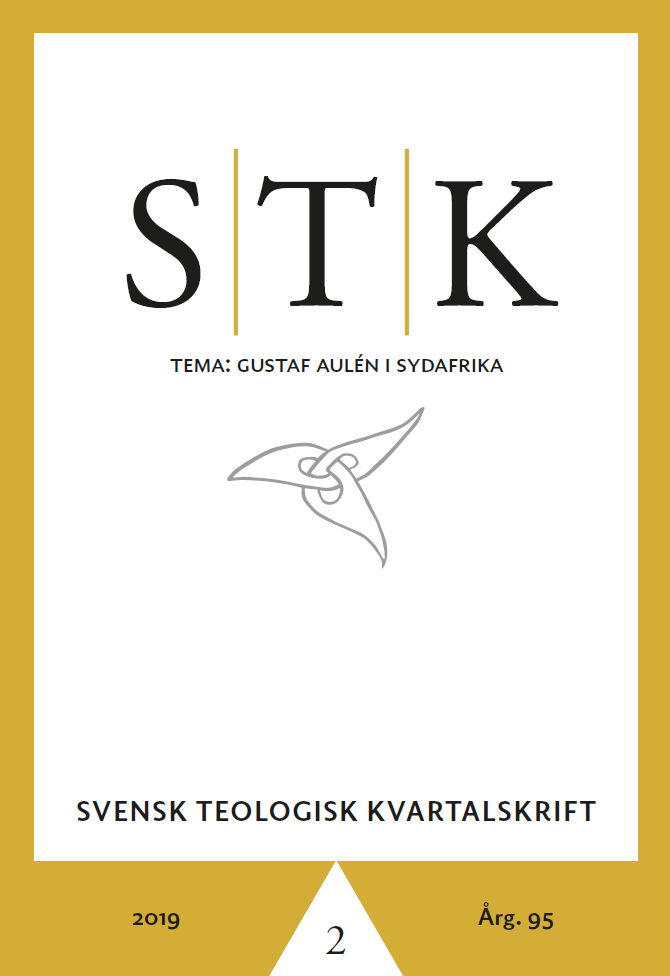Aulén Deconstructed
On Inconsistencies in His Theology of Atonement and Lex Creationis
Abstract
The contention is that Christus Victor is a complete piece of work, which reflects the various aspects of God's liberating act in Jesus Christ, but which, indeed, is ready to be exposed in the public arena. First, I revisit parts of Christus Victor, especially the church father Irenaeus, representing an early understanding of the atonement. Here, Aulén sees contours of what he calls the classic model of the atonement, favouring this model, clearly at the expense of the Latin and the subjective models. But all three models have meaning and his point of departure from Irenaeus gives a solid base. Secondly, Christus Victor may not be left in isolation. When Aulén says towards the end of the Second World War that the continuity is unbroken between his work on the atonement and his later public discourse on lex creationis, God's law of creation, I protest. This cannot be. I then make use of tools of deconstruction, taken from Derrida, as follows: disclosure, displacement, bringing in a new theory, and dispersal. Breaking up what was deemed as a watertight continuity, I declared Christus Victor to be the new theory (new in the sense that almost all who are not in the inner circle of church and theology never heard about it), which now must come out on top. Thirdly, two examples are given of how the model of atonement operates in the public arena: on political forgiveness (Hannah Arendt) and on reparations (Mark Sanders); the former relating to a post-Second World War setting, the latter to post-apartheid South Africa.
Downloads
Published
Issue
Section
License
Copyright (c) 2019 Hans S.A. Engdahl

This work is licensed under a Creative Commons Attribution-NonCommercial-NoDerivatives 4.0 International License.


